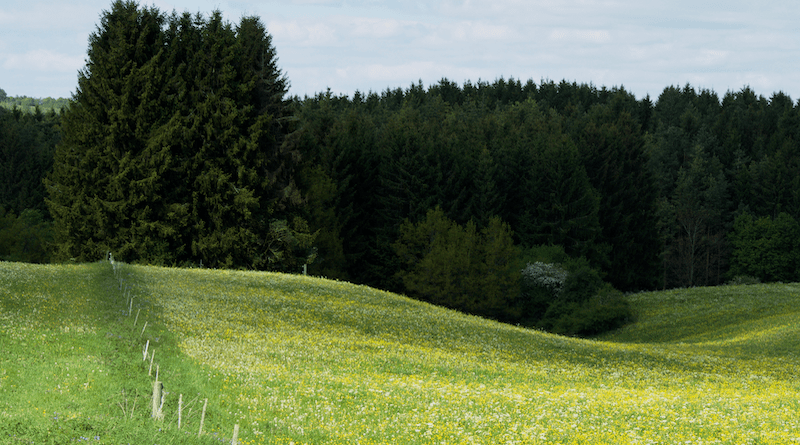Finding A ‘Happy Medium’ For Local Stakeholders Of Rural Landscapes
An international research team led by Dr. Margot Neyret of the Senckenberg Biodiversity and Climate Research Center in Frankfurt investigated how land in rural areas in Germany could be best used so that all user groups get as many benefits as possible, and equitably.
The interdisciplinary study, in cooperation with the Frankfurt-based ISOE – Institute for Social-Ecological Research, was published in the renowned journal “Nature Sustainability,” and evaluates the level of ecosystem benefits provided by different landscapes and the extent to which they meet the varying needs of the local population. By doing this, the researchers show that strategies involving comprehensive changes to landscape land use could lead to social conflicts. The study also identifies a balanced mix of forest and grassland as a formula for fair land use that benefits all groups equally.
In the debate about increasingly scarce land resources, the often conflicting interests of agriculture, forestry, tourism, and nature conservation organizations regularly confront each other. Existing tensions could increase even further, as demands for drastic changes in land use are being voiced in light of geopolitical, climate and biodiversity crises. Various stakeholders are arguing for different solutions: for example, for the conversion of more land within nature reserves, as agreed at the UN Biodiversity Conference in December; comprehensive reforestation for carbon sequestration; or for the expansion of local food production. But what impact would these have on local stakeholder groups, and what land use strategies would allow as many different ecosystem services as possible to be used optimally, while at the same time enabling a fair balance between the interests of local groups?
The study is based on extensive data collected as part of the “Biodiversity Exploratories” project, which has study regions in Northern, Central, and Southern Germany. “In the study, we examined a total of eleven different ecosystem benefits, ranging from timber or fodder production to recreational value and CO2 storage,” explains Margot Neyret. She adds, “We modeled a wide range of scenarios and identified the landscapes in which all services are provided at high levels, and equitably across the stakeholder groups.”
“The diverse ecosystem services provided by landscapes are valued very differently by local groups,” explains Sophie Peter, postdoctoral researcher at ISOE. She continues, “This became evident from workshops and interviews that we carried out with 14 different groups, including people from tourism, agriculture, and nature conservation organizations, as well as local residents. We incorporated these different interests into our model and also realized that we had to consider them in a historical context. For a long time, our cultural landscapes in Germany were only oriented toward satisfying the demands of agriculture and forestry. Over time, more and more stakeholders have been added, increasing the complexity of designing land use concepts at the local level.”
Results of the model showed that a moderate increase in (mixed) forest areas and the de-intensification of grassland management emerges as the “ideal” scenario for the areas studied. In contrast, the more comprehensive changes that some are proposing, reduce many of the current benefits the landscape provides and disproportionately disadvantage individual stakeholder groups, according to the modeling.
“We were surprised to find that the current landscape is already close to optimal when measured against the multiple benefits it provides for the local community . Only small adjustments are needed to produce the best possible landscape that compromises between the needs of all stakeholders,” reports Neyret, and she continues, “This can be explained in part by the fact that the regions we studied have a long history of balancing biodiversity protection with local economic interests.” Peter adds, “Our study provides decision-makers with an important tool for future land-use planning. By integrating the views of entire rural communities we show how important it is to represent the diverse interests of society when searching for solutions to the major land use sustainability challenges we face.”

